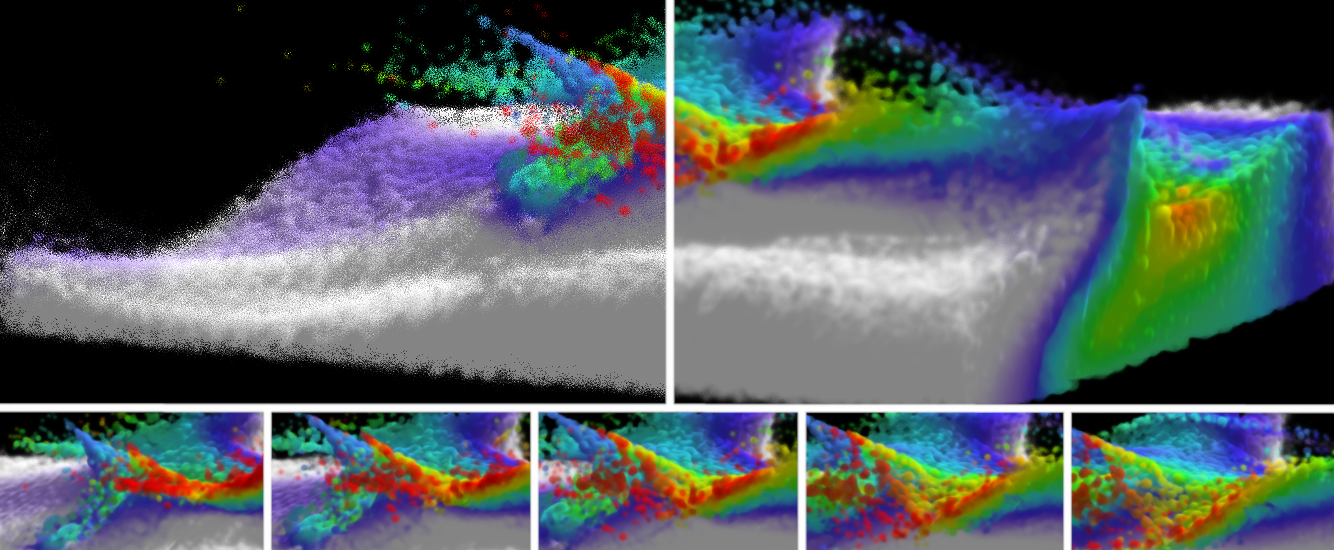Attribute-Aware RBFs: Interactive Visualization of Time Series Particle Volumes Using RT Core Range Queries
Nate Morrical, Stefan Zellmann, Alper Sahistan, Patrick Shriwise, Valerio Pascucci
DOI: 10.1109/TVCG.2023.3327366
Room: 104
2023-10-26T04:57:00ZGMT-0600Change your timezone on the schedule page
2023-10-26T04:57:00Z

Fast forward
Full Video
Keywords
Ray Tracing, Volume Rendering, Particle Volumes, Radial Basis Functions, Scientific Visualization
Abstract
Smoothed-particle hydrodynamics (SPH) is a mesh-free method used to simulate volumetric media in fluids, astrophysics, and solid mechanics. Visualizing these simulations is problematic because these datasets often contain millions, if not billions of particles carrying physical attributes and moving over time. Radial basis functions (RBFs) are used to model particles, and overlapping particles are interpolated to reconstruct a high-quality volumetric field; however, this interpolation process is expensive and makes interactive visualization difficult. Existing RBF interpolation schemes do not account for color-mapped attributes and are instead constrained to visualizing just the density field. To address these challenges, we exploit ray tracing cores in modern GPU architectures to accelerate scalar field reconstruction. We use a novel RBF interpolation scheme to integrate per-particle colors and densities, and leverage GPU-parallel tree construction and refitting to quickly update the tree as the simulation animates over time or when the user manipulates particle radii. We also propose a Hilbert reordering scheme to cluster particles together at the leaves of the tree to reduce tree memory consumption. Finally, we reduce the noise of volumetric shadows by adopting a spatially temporal blue noise sampling scheme. Our method can provide a more detailed and interactive view of these large, volumetric, time-series particle datasets than traditional methods, leading to new insights into these physics simulations.